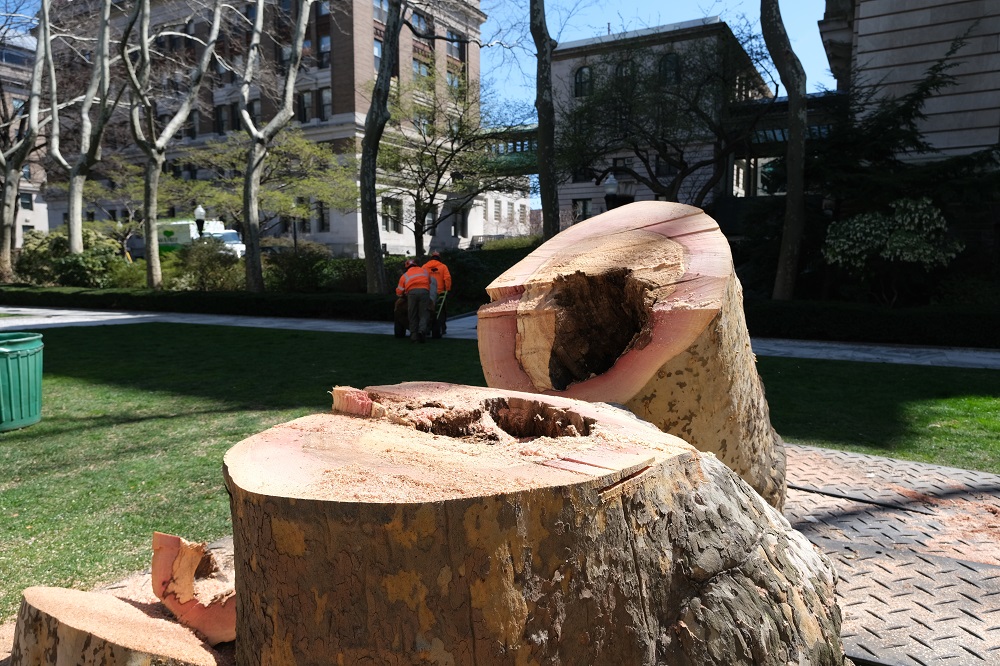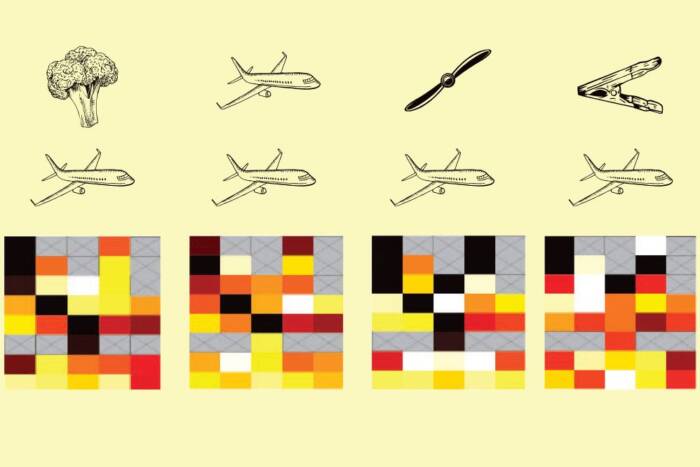A venerable tree ends its tenure

An arborist who is a specialized tree climber makes precise cuts to hold carefully knotted ropes in place, securing each chunk of tree being dismantled.
After gracing the university’s north-south pathway for decades, a London plane tree was removed due to interior decay that posed a safety risk to the campus community and nearby buildings, including the Graduate Students Residence and the Child Family Center. A relic of landscape architect Dan Kiley’s 1956 designs, the giant hardwood required a team of professionals to execute its removal.
“It’s sentimental when trees go. They take all these years to develop, and they give us a lot without us even noticing; shade, a moment of beauty,” says Rockefeller’s head gardener James Sullivan. “But safety comes first.”
Last year, an arborist from SavATree, the company in charge of Rockefeller’s landscape stewardship, delivered several nutrient treatments attempting to slow the tree’s demise. Nevertheless, the rot came dangerously close to the tree’s outer holding wood. Using a specialized instrument called a resistograph, the company determined that the decay was far advanced and that the tree could collapse in stormy weather.
A team of nine was brought in to take down the approximately 70-foot-high tree. They spent five hours methodically removing branches while their tree climber, clad in crampon-like boots, fixed himself to the trunk, high above the roof of GSR. The team then chain sawed away ever larger chunks of trunk, until reaching the bottom six feet, where the once-solid core had become spongey pulp and removed the stump with a large stump grinder. The tree’s branches were converted to wood chips that SavaATree recycles as mulch.
Though it has big roots to fill, a new London plane tree was planted in the old one’s place. The university’s tree map has been updated to reflect all the new vegetation and landscaping around campus, including the green roof of the Stavros Niarchos Foundation–David Rockefeller River Campus.

Significant deterioration necessitated the tree’s removal.


